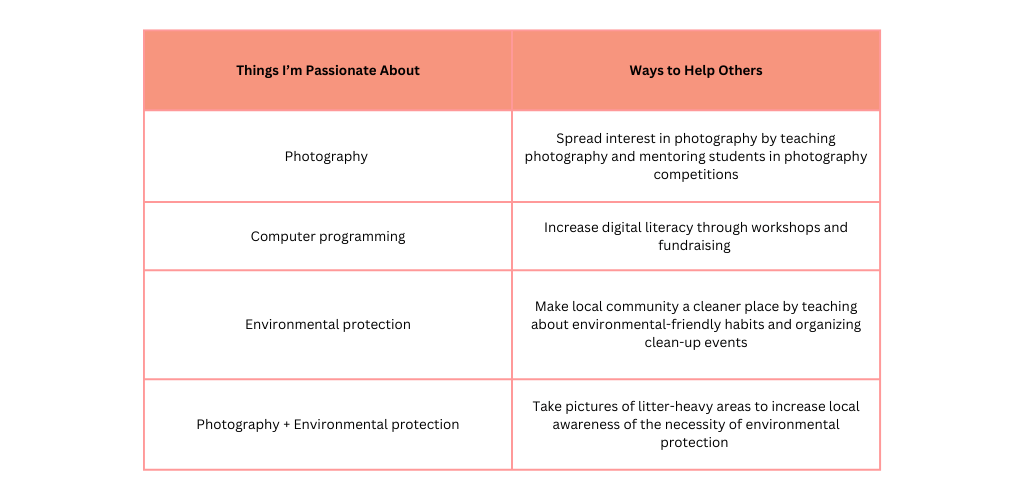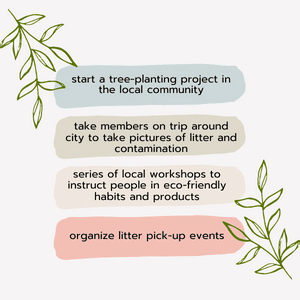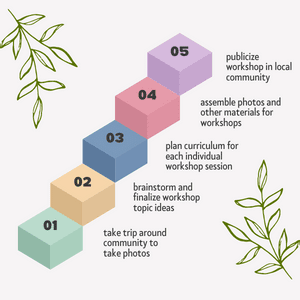

Taking on leadership positions in high school helps you learn real-world skills, build meaningful connections, and stand out in college applications. One of the best ways to demonstrate leadership in high school is to start your own organization (whether it be a school club or an outside volunteer organization).
However, if you’re not sure how to get started, that’s what this post is for. In this article, I will provide an easy step-by-step guide on how to start an organization in high school. By following these 4 easy steps, you’ll be able to get your club or volunteer organization off the ground quickly.
For more on what counts as leadership in high school and unique ways to show leadership, check out this article.
This post may contain affiliate links, which means that when you make a purchase through a link, I make a small commission at no extra cost to you.
Every organization needs a mission statement to clearly communicate its purpose to others. If you’re unsure about how to create one, follow these easy steps:
Determine your organization’s objective
To come up with your organization’s objective, you need to A. identify an area you’re passionate about and B. determine how you help others in that area.
To simplify this process, make a two-column table. In the first column, list the things that you’re passionate about. In the second column, list ways you could help others. You may even brainstorm ways to combine different passions. For example, your table could look something like this:

Brainstorm organization names
Once you’ve determined your organization’s objective, you’ll want to brainstorm some names. If you’re having trouble, just search for club or organization name ideas in your chosen niche. You’ll find lengthy lists of names online that you can use as inspiration.
Let’s say that I decide to go with the last row of the table for my organization’s objective. I’ll name my hypothetical organization Snapshots for Nature.
Write a few variations of your mission statement
Now that you have a name and objective, you can create your mission statement. You’ll want to try a few variations that follow the following format more or less:
The goal of [organization name] is to [your cause] by [action].
For example, the mission statement for my hypothetical organization could be:

Once you’re happy with your mission statement, you can move on to the next step.
Step #2: Spread Interest
In order to create an organization, you’ll need people who are interested.
If you’re starting a school club, you’ll likely need to find a faculty advisor first who can sponsor your club. Additionally, you’ll need to look for a few other interested students.
If you’re starting an outside organization, you’ll need to recruit volunteers.
Either way, here are a few easy strategies to spread interest in your organization:
Reach out to people you know
Start off by talking to friends or classmates who might be interested. If you need a faculty advisor, speak to a teacher who you think would be interested in your club.

Typically, reaching out to people you know is sufficient for starting a school club. However, if you are interested in starting an outside organization, you may need to consider the following strategies.
Do active marketing
This is helpful in spreading awareness of your organization to greater numbers of people.
For example, you can start social media accounts for your organization. Additionally, you can create physical posters to put up around your school (if allowed) and neighborhood. If available, you can contact your school’s broadcasting team to see if they can include a brief promo about your organization.

Also, keep in mind that people who come across your promos should be able to contact you if they’re interested. As such, you should include an email or phone number that they can use to reach you.
Additionally, you may want to consider creating an application form for potential volunteers to fill out. In this way, you’ll have a better idea of the skills and amount of commitment each volunteer will be able to bring.
For more details on how to recruit members, check out “How to Promote a School Club—11 Easy Ways to Attract Members”.
Step #3: Create a Communication System
Once you have recruited a group of people, you’ll need to set up an efficient communication system. The purpose of this is to ensure that all members receive necessary updates and know who to reach out to with questions or suggestions.
In order to set up a communication system, you should do the following:
Decide on a communication platform
Although not 100% necessary, having a single platform dedicated to organization-related communications can be very helpful. For example, popular platforms like Slack or Discord aggregate communications in one place and organize them into channels for specific topics.
Set up a meeting schedule
One of the best ways to ensure that all members are on the same page is to hold regular meetings. As such, you’ll need to decide on when and where to hold meetings.
If it’s difficult to hold meetings in a physical place, you may consider holding virtual meetings.
Appoint specialized roles
Another way to streamline communication (and alleviate personal pressure) is to appoint leadership roles to other members. For example, you may want to assign roles for community outreach, social media management, and other areas of need.
Step #4: Take action
Finally, you’ll need to act on the “action” part of your mission statement. Making things happen to create real impact is probably the hardest step. However, I will break it down into more manageable mini steps:
Create a brain dump of ideas
For example, the action part of my hypothetical organization’s mission statement is “raise awareness about human-created contamination and the importance of environmental-friendly habits.” I need to brainstorm ways that I can actually make this happen. Here is a brain dump of my ideas:

Set short-term and long-term goals
The prospect of turning a written idea into an actual event can be overwhelming. As such, you’ll need to break down the projects you decide on into manageable chunks.
You can view the realization of these projects as long-term goals. You can create short-term goals by setting deadlines for the smaller chunks.
For example, say I decide on running a series of workshops for Snapshots for Nature. Running the actual workshops will be my long-term goal.
Here’s an overview of my short-term goals (although not included in my example, you should set deadlines for the completion of each short-term goal):

Maintain communication
I already spent an entire step talking about communication, but I would like to reemphasize the importance of communication here.
In order to meet deadlines, you’ll need to hold regular meetings and have a platform for streamlined and organized communication.
Appointing specialized roles will also make it easier to split responsibilities between members.
Conclusion
Starting a club or organization in high school can often seem like an intimidating task. However, I hope that this step-by-step guide on how to start an organization in high school showed you that with passion and meticulous planning, it’s possible for anyone with a vision.
By taking the courageous step of becoming a student leader, you’ll be able to make a positive difference in your school, local, or broader communities.
For more on high school leadership, check out:

Learning With Angie is a place to share honest, unfiltered advice to promote student success. So if you’re a student (high school, college, or beyond) looking for tips on productivity, studying, personal growth, and more to reach your potential, this is the place! To read more about Learning with Angie, click here.


















